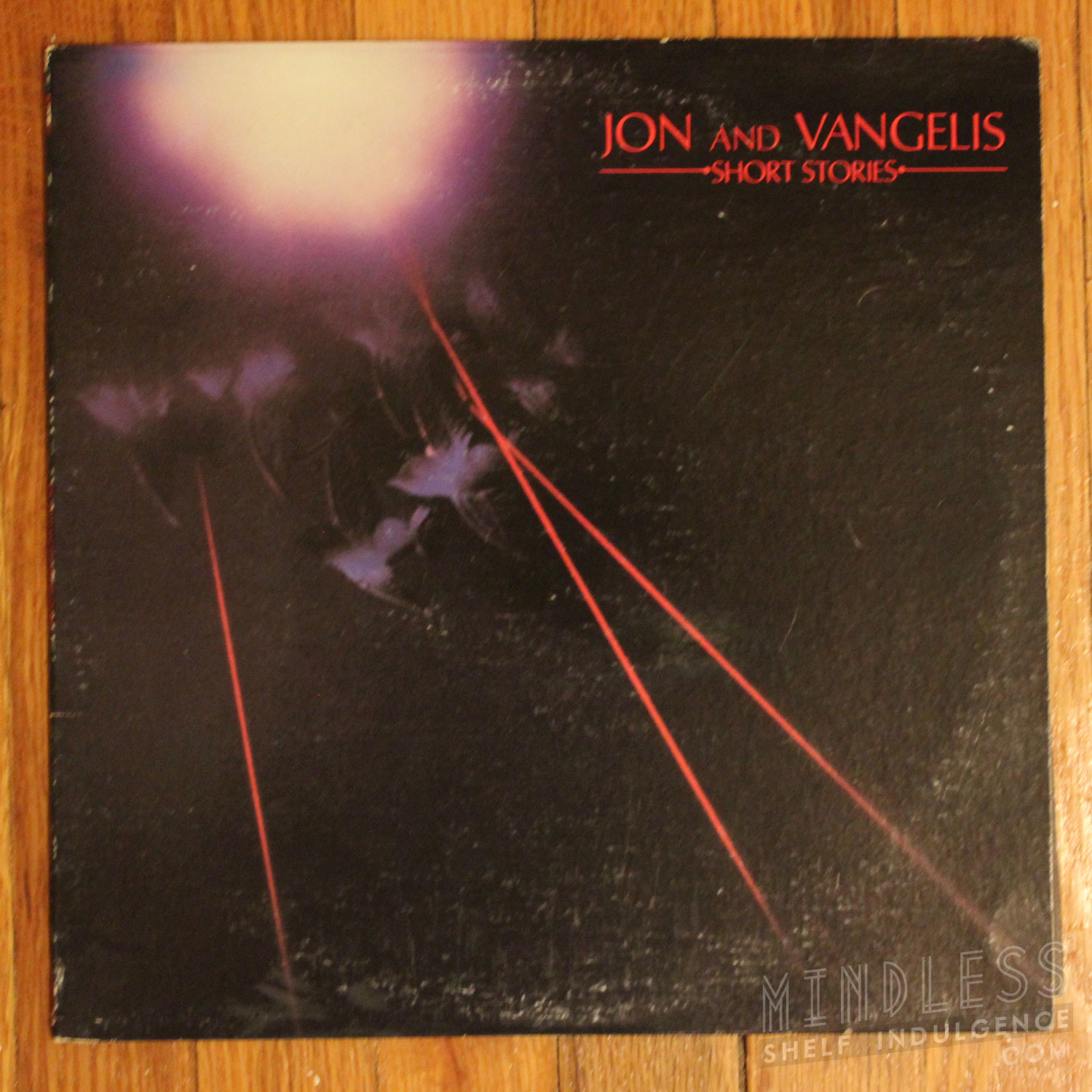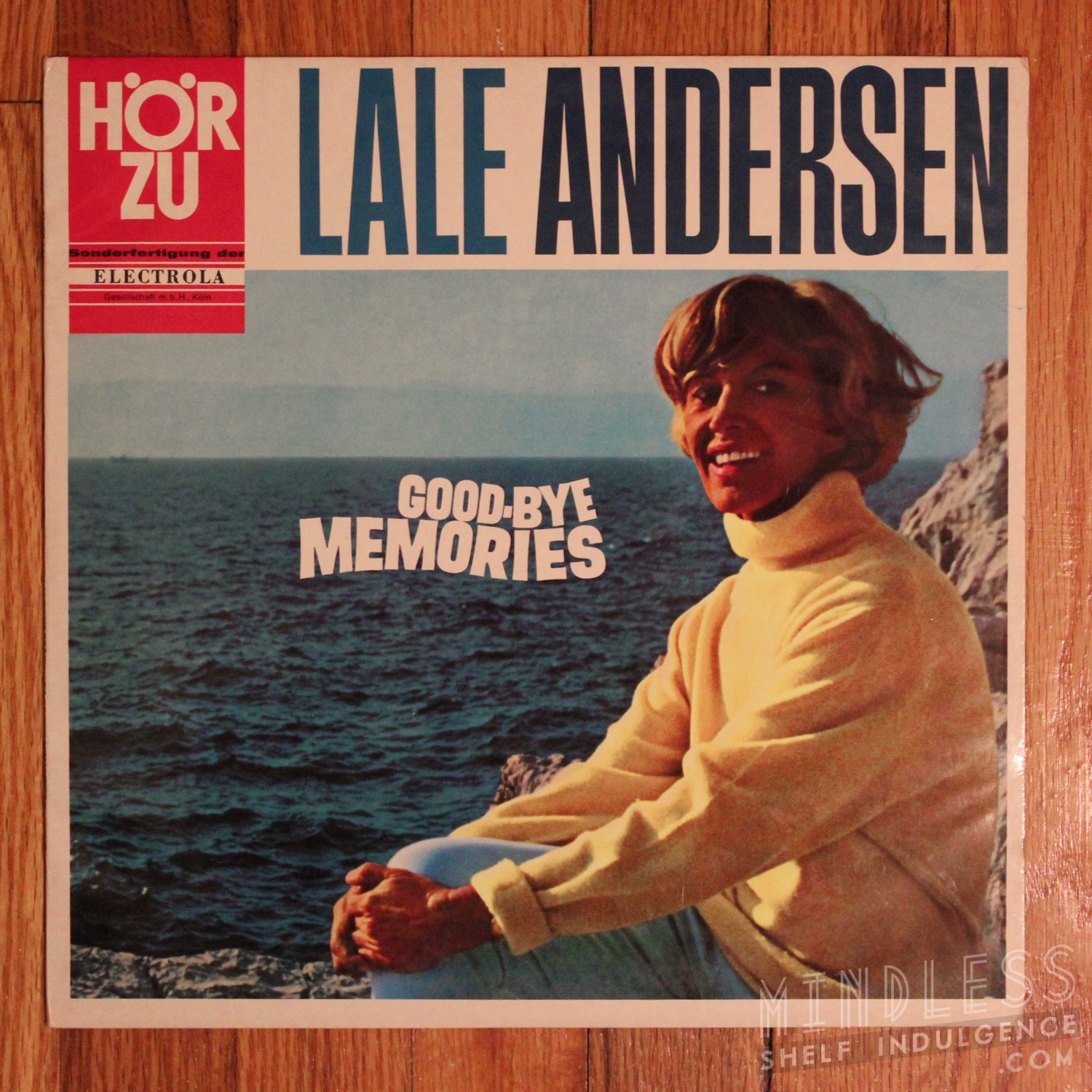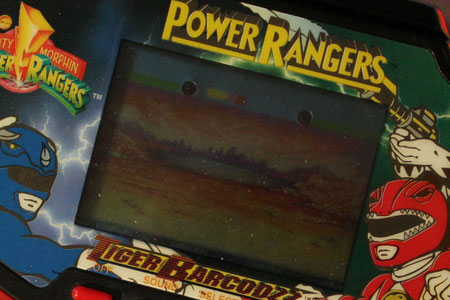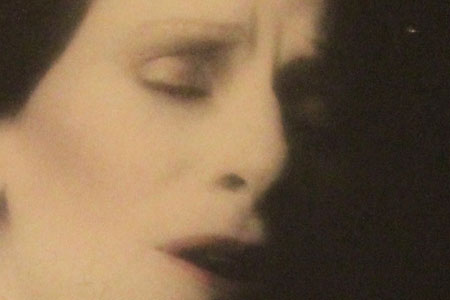When you have an accidental record collection that reaches numbers you’ve given up on counting, it’s time to slim down. Take all of the audio that’s ever been released on LP, and figure out how many hours that it may take to listen to. How many hundreds of years of music were released on vinyl? How many years of music never got a release beyond those original records? The idea of it is daunting, and the concept that there’s so much that you may miss the one thing that truly inspires you, or connects to you, is somewhat depressing.
You can’t rely on others to curate things for you, or you’ll never find the things that are uniquely you. You cannot be an amalgamation of others people’s tastes… but you also can’t experience everything, so you absorb as much as you can without losing yourself. Going through these first forty records has been a lesson in curation, and how it relates to the identity of a curator and archiver.
For the first 30, check out Part 1, Part 2, and Part 3. The rules are pretty simple : blindly pull ten records out of a box, and listen to all of them, in no particular order. Consider them. And then decide if they’re worth the space they take up in your life.

The Time
Ice Cream Castle
[1984]
If you enjoy your pornography without pictures and also pretty racist, this is the perfect album for you. The Time is a band that Prince started so they could perform his music, so it all sounds like Prince anyhow, take it or leave it.
Side one ends with a really long skit about a guy taking a lady to a Chinese restaurant, and you can tell it’s a Chinese restaurant because of the offensive accent that the waiter uses. The lothario seduces his lady by burping and flaunting his wealth and supposed sexual prowess, and Side Two is a continuation of the story where they finally consummate their lust. I can’t tell if it’s supposed to be funny, instructional, or autobiographical, but it’s kind of just unbearable. It’s the kind of thing you play for a friend once to show them the WTFery you’ve found, and then forget about.
It also has to be considered for the era from which it came, when Men Without Hats had recently released their strange ‘Living in China’ which certainly feels a little tone deaf, reducing the country (perhaps ironically?) to simplistic ideas about ping pong and rice, and just before that, Red Rockets released ‘China’, which is decidedly less simplistic but also paints China as a place of obscure and primitive mysticism. I’m not well-versed enough in history to figure out exactly what the turning point was, but Sixteen Candles and its problematic stereotypes also came out in 1984, so we clearly were not over it yet, and would not be for a while.
Keep or toss? There are enough annoying choices on this album to totally overshadow the actual music, which is absolutely sound, but this is not going to remain with me.

Dixie Dregs
Dregs of the Earth
[1980]
A cover and band name that implies some kind of Southern-fried metal. The picture is eerie and surreal, depicting a bunch of mud monsters crawling out of the wet earth at the edge of a grey, quiet ocean, and it’s great. But in the end, it creates an atmosphere that has more to do with the band’s name, and nothing to do with the album. This cover is by Terry Taylor, who probably isn’t the same Terry Taylor as the guy from Daniel Amos who also did all of the incredibly bizarro music from The Neverhood video game. I’m totally unable to find if this Terry Taylor has done other art, but it feels a decade ahead of its time; this is easily a mid-90s album cover.
It starts with some very traditional Southern-sounding rock, but it slowly evolves into some pretty interesting prog rock and jazz by the end of the album, which ends with a short acoustic folk song. It’s all instrumental, and after that first super straightforward first song, ‘Road Expense’, everything else is pretty much anything goes. You may not have heard of Dixie Dregs (later known as just The Dregs), but you’ve probably heard of Deep Purple, Kansas, Winger, and Mahavishnu Orchestra, which are just some of the other bands that shared members with Dixie Dregs.
I was about to write this off as a standard, uninventive rock album, but this became so much more.
Keep or toss? A slow but successful transition from ‘toss’ to ‘keep’, thanks to some pretty cool Zappa-esque moments on Side 2 that re-contextualized everything that came before it. Like The Sixth Sense, sometimes you need to see the end before you can really appreciate the beginning.

Tony Argo
Jazz Argosy
[1961]
You’ll find a hundred LPs that feature organists and accordion players at every thrift store in America, and it’s extremely easy to overlook them. Eventually, it just becomes this repeating pattern of keys that has no meaning or definition as you flip through crates looking for something unusual. It’s stuff that old ladies would pick up to remind them of the old country or as kitchen background music, and to be perfectly honest, despite my love of the subtleties of art, most of it is extremely generic stuff.
So, I don’t know how Tony Argo got into my collection. Even the word ‘jazz’ on the cover of a generic accordion album usually means yet another beer barrel version of “Tie A Yellow Ribbon”. It becomes a meaningless mash of false advertising that nobody can be held accountable for because they’re all probably dead.
But surprise – Jazz Argosy is amazing. It’s real jazz. And while every track doesn’t include an accordion, the ones that do are so unique and genuinely jazzy, like actual genres of real 1960s jazz, that it’s kinda mind-blowing. I became a fan of jazz accordion with Iain Ballamy and Stian Carstensen’s Pepper Street Interludes, and being a fairly uneducated fan of jazz, I was pretty sure that it began and ended there, since the instrument isn’t really known for its versatility. Here’s an album from 60 years ago that helps redefine the instrument, and the only release that puts successful musician Tony Argo as the headliner.
Fortunately, Mr. Argo is still alive and kicking in South Carolina as recently as August of 2020, when a local paper wrote up a brief interview with him. Despite his long and storied musical career, he’s all but a ghost on Discogs, so it’s difficult to find more of his work, but this one album is an unexpected gem that also never made it to any digital format.
Keep or toss? This LP seems to have significant value, with some copies of this only known pressing selling for upwards of $80. The music is great and it would be expensive to replace, so it stays.
The Brothers Johnson
Right On Time / Blam!
[1977/1978]
A couple of LPs by The Brothers Johnson popped up together in the review pile. The whole genre of funk and R&B that uses sci-fi imagery has some of the best covers in music, but it’s no indication of the kind of record you’ll find inside. The funk across these two albums runs from sci-fi laser sound effects funk all the way to at least one Weather Channel funk song, with a few stops in safe adult contemporary funk along the way. There are very few absolute universal truths in this life, but one of them is that life is too short for Adult Contemporary. It’s a genre meant to soothe and placate the troubled mind before a dentist appointment, or before you get your exorbitant Camry repair bill before you go home to your microwave dinner. It’s hard to hear any adult contemporary song and not feel a twinge in your wallet and feel a little bit closer to death.
The energetic moments, and the moments with great harmonies, are wonderful, however. I’m simple; I like my funk to be California Raisins levels of energy. “Ride-O-Rocket” is one of the best songs I’ve heard this year… for the first 3 minutes.
Here’s the line, though : these are good enough to keep around as digital copies. So what do you do when one of these is a really cool picture disc that somehow found its way into your clutches?
Keep or toss? Keep the picture disc. Somehow, there’s always room for picture discs, even though they’re known to have a worse sound that a regular ol’ record. Everything else can go. Sorry, Brothers Johnson.

Nat “King” Cole
Nat “King” Cole Meets Lester Young
[1963]
There’s not much I can say about that this music writer Brad hasn’t already said far better than I could. The most interesting takeaway from his well-researched article is that this is a 1963 record made from a series of 5 recordings made between 1942 and 1947, and the album places Nat King Cole (on piano) front and center, even though he’s only on two tracks. Because Crown Records offers next to no information on their cover except for some mis-identified or misspelled track names, it takes a heck of an expert to figure out what’s what in here. Were they intentionally misleading, or just careless? Who knows?
What is known is that Lester Young’s band is on every track here. Brad’s also right that the recording quality here isn’t exactly stellar. I’m all for authenticity, but there’s a lot to be said for clarity too. Musically, it’s really nice Sunday jazz, but that’s not too surprising.
Keep or toss? Two great musicians, kinda sometimes together on an album that’s a gimmicky re-release of previously-released stuff, labeled inaccurately.

Jon and Vangelis
Short Stories
[1980]
When prog rock climbs just a little too far up its own butt, it becomes art rock. Yes is an incredible band, and the mononymed Vangelis is regarded as the king of electronic music; without him, New Wave might not have gone the way it did, and since New Wave is the best genre, we have a lot to be thankful for. Hilariously, Live at the Necropolis : Lords of Synth references him directly with their use of the character Xangelix, as well as two other synth-gods. It wasn’t until now that I finally got the joke.
I may have a peculiar set of personal preferences, but I have a relatively low tolerance for songs that people talk though. Tom Waits’ “Nirvana” is a rare exception, and he’s just reading a Bukowski poem. I skip over Medeski Martin & Wood’s “Your Name is Snake Anthony”, every time. Even Morphine’s “The Jury” is a little hard to sit through. So, I was just a little put off by Jon Anderson shouting out the name of the album on the talky and theatrical first track “Curious Electric”, but once when you get through the art rock shell here, it’s kinda like finding a lost Yes album at points. It’s synthy, it’s spacey, and it’s soaring. The packaging here as some kind of stage play does it a bit of a disservice, but I’m sold. Maybe just skip the first track.
Keep or toss? From toss to keep over a few afternoons of listening.

Icehouse
Icehouse
[1981]
Australian downbeat, occasionally ballad-y New Wave that barely cracked the Top 10 in the US, but won multiple awards in their native country. Somehow, during all of my explorations into the Best Genre, digging through figures like Lene Lovich and Wazmo Nariz, Icehouse never came up. It’s an argument for just how regional music can be, how many neat bands exist just below the surface, and that it’s not always terrible when a band records a song that’s also the band name.
It’s enjoyable from start to finish, and it’s pretty wonderfully chill. In my mission to absorb all New Wave into my body and transform into a neon lazerbeast, this is a great discovery… which millions of people had already discovered 40 years ago.
Keep or toss? Keep, and look for more.

Lale Andersen
Good-Bye Memories
[1966]
Who cares?
Just one of those middling albums that makes you say, ‘who cares?‘, but maybe that’s unfair. This isn’t to say that Lale Andersen wasn’t historically important and very interesting, but when standard songs don’t transcend being standard, at least to these ears, there’s not a whole lot of reason to keep listening. There are so many singers of this era doing similar things that it’s pretty hard to really stand out.
As a German citizen, Lale Andersen tangled with the Nazis, who forced her to perform in a propaganda film, and forbid her to perform songs that were popular among the Allies due to her friendship with Jewish artists. She was also forced to re-record a popular song with a more militaristic theme. This album shares a name with her farewell tour, and shortly before her death in 1972, she published an autobiography called (in German) The Sky Has Many Colours, which doesn’t appear to have been translated into English, but sounds like it would be infinitely more interesting that this album.
Keep or toss? Sell; this is the original German pressing of this album and 95% of the pressings for sale come from Germany, so I may have one of two copies that are actually for sale in the states.

Liona Boyd
The Romantic Guitar of Liona Boyd
[1985]
One of the things I love to pick up is albums where someone who looks really super proud of themselves is front and center on the cover; it’s even better what they’re trying to be sexy. Gender doesn’t matter in this sub-collection; all that matters is that they look like they take themselves really seriously. Pair this front cover with a reverse photo where she’s nuzzling with a couple of horses in a field, and you have a recipe for something truly great. Picking up mysterious guitar records has resulted in some outstanding discoveries before.
The first thing that you realize with this album is that it’s not especially guitar forward; not for something that positions the guitar as the selling point of the album, anyhow. Seeking out other recordings and performances by Liona Boyd, it’s clear that she’s a talented guitar player who can handle a song without any backing help whatsoever, and I’m always down for any performance of ‘Moonlight Sonata‘, but strangely, even this recording relegates Boyd to playing only a small part of the song, while mundane orchestration plays behind her. She’s so much better than playing the student guitar level of repeating notes she’s doing here. It’s just bewildering.
The album closes with a rendition of ‘Chariots of Fire’, which was composed by none other than Vangelis, mentioned above, bringing everything full circle. While this album ultimately does not utilize Liona Boyd as well as it should have, it’s an interesting doorway into a really talented performer.
Keep or toss? This one is going on the sale rack; it’s not an enjoyable listen, but I wouldn’t hesitate to find more by Boyd in the future.
 C. David is a writer and artist living in the Hudson Valley, NY. He loves pinball, Wazmo Nariz, Rem Lezar, MODOK, pogs, Ultra Monsters, 80s horror, and is secretly very enthusiastic about everything else not listed here.
C. David is a writer and artist living in the Hudson Valley, NY. He loves pinball, Wazmo Nariz, Rem Lezar, MODOK, pogs, Ultra Monsters, 80s horror, and is secretly very enthusiastic about everything else not listed here.







